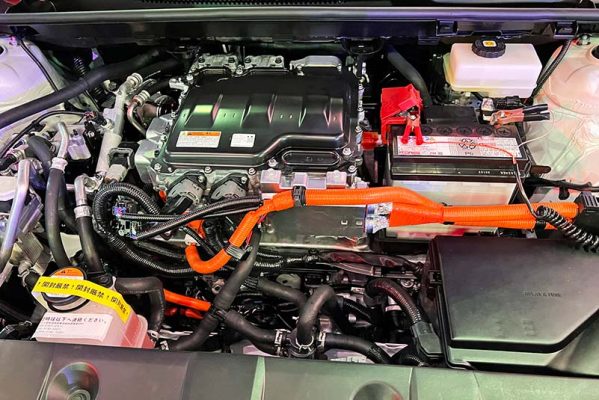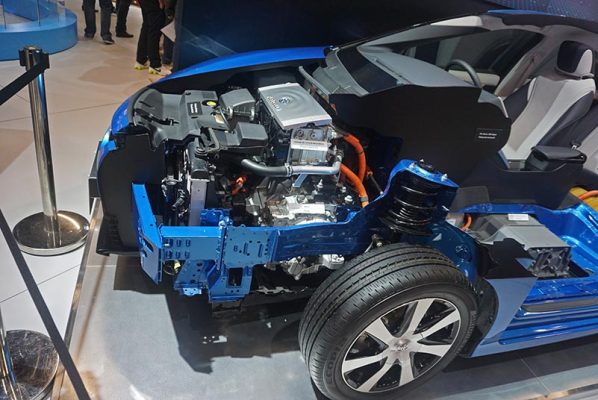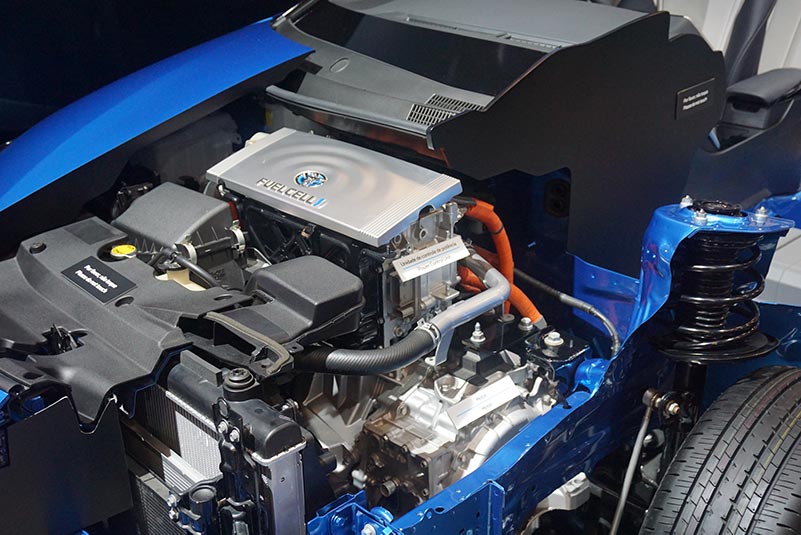Best EV Car Motor Kits for Ultimate Performance – 2025:The electric vehicle (EV) market is being changed by the EV revolution in several different ways, where a situation is coming into being in which conservation, quality, and invention are side by side with each other.
In line with the envisaging for 2025, instead of the usual eco-kindly EVs, they have become the so-called technological wonders that the children training in school and playing online slots want to attain because of the time they have shown to be more playful than Mercedes-Benz AMG’s. The electric vehicle engine is the central part of any vehicle that has to provide power.
It converts electrical energy into mechanical energy, and also it allows the car to start smoothly while at the same time, it lets the battery have more life. Whether you want to upgrade your present electric vehicle or construct a new one from the beginning, the appropriate engine kit is a very important factor for getting maximum efficiency. This article concerns the best motor kits for EVs in 2025, considering motor types, power, efficiency, cooling systems, and others.
From cars used for racing, which are equipped with powerful engines, to cars aimed at more energy-efficient driving, our article will give you the ins and outs to make a good choice when you are in the position to determine the best motor kit for your EV.
Understanding EV Motor Kits
An EV motor kit is a package of items that includes an electric motor, a controller, wiring, and other needed components for running an electric vehicle. The kit is similar to the heart of the car’s propulsion system because it turns the battery’s electric power into mechanical motion.
The quality of the engine will be the determinant of the driving experience of the vehicle, it will form the acceleration, top speed, range, and behavior of the car.
Key Components of an EV Motor Kit:
The use of an all-electric (EV) motor kit requires approximately five significant components, where each of which plays a distinct function in the overall performance of the car. Together, these modules form the power switch in the electrical machine to transform it into a smooth and energy-efficient car operation.

Electric Motor:
Traditionally, one of the main parts of an electric motor kit, an electric motor, is a device that receives electrical energy from a battery and changes it into mechanical power to move the wheels. Electric motors have the form of both AC (alternating current) and DC (direct current). They can be specific as DC brushless motors, AC induction motors, and DC brushed motors with permanent magnets.
Every type has some plus points; for example, BLDC motors are highly efficient and involve no or very low maintenance, whereas AC induction motors are durable and reliable. The strength and efficiency of the motor are fundamental to the car’s performance as it can mean a difference in acceleration, top speed, and energy consumption.
Controller:
The controller takes on the responsibility of a central nervous system in the powertrain with the task of regulating the movement of electrons from the battery to the electric motor. This, in turn, makes the electric vehicle efficient. It directs the speed and torque of the motor by monitoring the throttle pedal through, generating an obstacle-free driving experience.
The state-of-the-art controllers of the present day use the newest operations to minimize the amount of energy lost during electrodynamic braking. Moreover, they even increase the effectiveness of the regeneration of energy. Most advanced controllers from top companies can be tuned in with different types of programs for changing the distribution of braking force, accelerating and other basic routines.
Battery:
An electric motor kit is powered by the battery, the primary energy source. The level of the battery has an essential influence on the range and performance of the vehicle by its compatible type, capacity, and voltage. Among the lithium-ion (Li-ion) batteries, they are the most popular as they have high energy density, long lifespans, and are relatively lightweight.
Lead-acid and nickel-metal hydride (NiMH) batteries are also used in specific scenarios. Battery management systems (BMS) are a key factor in the monitoring of battery health, the guarantee of an optimal charging and discharging cycle, and the prevention of issues such as overheating and overcharging.
Wiring and Connectors
Electricity moves effortlessly from the battery through the motor and the controller through efficient wiring and perfect connectors. The fault in one wire can cause energy dissipation, voltage drop, and hazards. Thick wires that are appropriately insulated effectively lower electrical resistance, keeping the almost perfect flow of electricity and, therefore, the system at maximum efficiency.
Using well-secured connectors will definitely make the connections tight so that the flow of power will not be broken and the electrical components will not fail.
Cooling System
Electric motors and controllers generate heat during operation, which, if not controlled, can reduce efficiency and damage system components. The cooling system regulates the temperature of the affected parts to ensure they are operating in the right conditions. Some systems follow a passive cooling technology approach that entails heat sinks and ventilation, while others integrate liquid cooling technology for further heat dissipation.
Prominent advancements like cooling solutions are vital to the long life, superior performance, and reliable operation of the motor kit.
Choosing the Right Motor Type
When buying an EV motor kit, one of the basic considerations is deciding the type of motor that will best satisfy your requirements. The three most popular types of motors used in EVs are Brushed Motors, which use brushes to transmit the current to the rotor. They are very inexpensive and easy to maintain.
Yet, they are less efficient and generate more heat than brushless motors. Brushless Motors, as the name indicates, do not rely on brushes to make the motor work. These motors also have higher efficiency, better durability, and require less maintenance. They are generally used in high-performance applications.
Induction Motors are very much like Tesla’s superior electric vehicles. However, their main advantage is the higher efficiency and higher torque at low speeds. They are usually those without the need for a permanent magnet and do not depend on the rare earth ones. The motor without a brush is almost always the top choice for high-performance requirements in EVs, while the brushed motor can be considered sufficient for tasks that are not very difficult.
The key advantages and disadvantages of each type should be stated to make the choice both physically and morally induced.
Motor Power and Performance
One of the major performance indicators for an electric car is motor power. The unit for motor power is generally kilowatts (kW) or horsepower (hp), with more significant numbers of these yielding the capability to meet the demands of fast acceleration and high top speeds.

In electric vehicles optimized for speed, motor power is the primary driver of the car’s capability to provide the necessary acceleration and high speed that guarantees a thrilling driving experience.
Torque:
Torque is the rotational force that the motor creates. It is, in fact, the very abettor for the acceleration. Raising torque values will ensure faster acceleration and better driving performance at low speeds.
Power Output:
An electric vehicle’s output tells you the highest speed the car can go and is a fundamental aspect of its general performance. A naturally high-power motor is the reason for its capability to reach high top speeds and sustain performance.
Most typical electric cars have power outputs of approximately 100 to 150 kW, while high-performance electric sports cars may have power ratings that are more than 500 kW. The choice of power rating depends on the type of driving activities you will engage in. For instance, an average electric car may have a motor power ranging from 100 kW to 150 kW, while electric sports cars could have motor kits exceeding 500 kW.
The choice of power rating depends on the type of driving you plan to undertake.
Motor Efficiency and Range
Eco-friendliness is a vital factor in making the right choice for a motor kit, especially if you are keen on purchasing an EV (Electric Vehicle) that can maximize its mileage. EV motors are generally more efficient than internal combustion engines, but there are significant differences in efficiency between motor kits.
Energy Conversion Efficiency: When implemented in Ford, Nissan, Tesla, or any other electric vehicle, high-efficiency motors transform more electrical energy from the battery into mechanical power, thus raising the overall driving range of the car.
Regenerative Braking: Some breakthrough motor knockoffs are designed with regenerative braking systems that can recapture the energy usually lost during braking. This driver assists the car in recharging the battery and, at the same time, decelerating it since they are the ones that are in control of the vehicle, and also avoid using the kinetic power to do a specific task by doing it themself.
An efficient motor is a key factor for the further distance an EV can run and also cleaning the power grid as the production and transmission losses modify efficiencies by producing electricity at the best- known location rather than the end-user.
Top EV Motor Kit Manufacturers for 2025
With the enlargement of the EV market, innumerable daring manufacturers have participated and led the phase in the production of silicon carbide MOSFETs and high-power IGBTs. These companies have produced items of the best quality in terms of engineering, power, and eco-friendliness, and thus, they have become the sector’s frontrunners.
Tesla: Tesla can only be described as an automotive legend with its visionary discoveries of the newest forms of electric batteries and motors. It is the one company with a leadership position in the electric vehicle market. The highlight of Tesla’s motor kits is that they are engineered to deliver superior power, efficiency, and performance, which sets them apart from the rest of the market.
Bosch: For a long time now, Bosch has always been a prominent figure in terms of its achievement in automotive technology, and it has offered a wide range of high-end EV motor kits. They also lead in developing long-lasting, reliable, and efficient car motor systems.
Siemens: Siemens manufactures EV motor kits that emphasize long-duration performance and low energy consumption. Their motors are designed for electric car drivers in the last stage of their careers, but they can also be used for high-racing applications.
EMRAX: EMRAX is a player in this sector specializing in developing and making very high-performance motors for sports cars and racing. The motors have a small mass and can withstand a high load.
These manufacturers have not slowed down in exploring ways to improve electric motor technology, and their motor kits lead the sales charts for 2025.
Cooling Systems for EV Motors

Cooling systems are a rather demanding part of an EV motor kit since motors create heat while operating. A competent cooling system keeps the motor working at the right temperature, thus preventing its overheating and ensuring its most efficient operation.
Liquid-Cooled Systems: Liquid cooling regulates the motor’s temperature more effectively. It involves circulating coolant through the motor to dissipate heat efficiently. One of the primary directions of automotive technology, for both cars and EVs, during the last decades has been to increase power, speed, durability, etc., while reducing costs and emissions.
Related concepts and projects belonging to automotive technology have shown better results in terms of operational efficiency rigidly/only with this approach. Toward all similar efforts and relevant ideals, today’s vehicles will bring goods, like more comfort, time, and prosperity to our environment.
Noise and Vibration Control
Even though EVs are less noisy than regular fuels, the engine can still produce some noise and vibration while operating. Annoying noise and vibrations can take away the pleasure and smooth ride of driving that most of the EV owners expect.
Noise Reduction Technologies: Premium motor sets are always coupled with a noise-blocking feature like sound-damping materials and optimized rotor designs to ensure down-to-earthness.
Vibration Damping: Effective vibration control results in a smoother and more comfortable ride. Advanced motor kits usually have vibration-damping mounts and materials that absorb unwanted vibrations.
Through these features’ actions of noise and vibration reduction, drivers can make themselves a part of the quieter, more enjoyable driving narrative.
Customization and Upgrades
Performance enthusiasts like the fact that you can diversify electric cars. Specific motor kits can be customized or improved to correspond to the very particular driving demands of the driver.
Performance tuning: Some motor kits can be made faster through performance tuning. This may include adjusting a motor’s power output and torque to equal the driver’s level of desire.
Battery and Motor Compatibility: To upgrade a motor kit, you might need to upgrade the battery as well to make the new components compatible with the old ones. By using a battery with a larger capacity, the car will get a range increase and more strength if it has a powerful engine while still sustaining better driving.
Advanced Controllers: Controllers with higher capability can lead to more precise vehicle handling, especially in acceleration, braking, and other vehicle dynamics.
Whether you prefer more power, longer range, or better control, modifying your motor kit allows you to optimize your car’s performance according to your driving style.
Installation and Maintenance
A perfectionist must be perfect when designing and maintaining an EV motor kit since the wrong installation may cause performance troubles or even motor damage. If you opt for a DIY installation, it is always good to get a professional opinion to ensure that the motor kit will work properly after installation and that you will not encounter any problems later on.
Professional installation, without a doubt, is possible on most high-end motor kits, as the process might be intricate. While others prefer to make a DIY installation, those looking for the safest option should let professionals equipped with advanced technology do the job.
Maintenance: Normal repair services, such as examining wear and tear, washing the engines, and verifying the coolers’ efficiency, keep the engine at its best performance all the time.
Appropriate maintenance can lengthen the life of the motor kit and avoid costly repairs.
Conclusion
One of the most essential things in an EV motor kit is that it will help you utilize your electric vehicle’s maximum performance, efficiency, and general driving experience. You are about to do significant work when making the right choice for the motor kit. Besides, the car will also have a significant breakthrough. The most important thing to understand is that your chosen kit will be your vehicle’s heart and soul.
Thus, go for one that best fits your driving style and needs. The electric vehicle (EV) sector has experienced tremendous growth and is anticipated to become even more significant. Motors are the technology that will play a role in the EV industry, and in the electric mobility industry, they have been foreseen to become more critical. Moreover, it is expected to make the most of the innovation in the field of electricity.
Therefore, a shift towards the info-age of electric vehicles presents numerous possibilities that have never been seen before.
<script type="application/ld+json">
{
"@context": "https://schema.org",
"@type": "BlogPosting",
"mainEntityOfPage": {
"@type": "WebPage",
"@id": "https://ricardobiz.com/ev-car-motor-kit/"
},
"headline": "Best EV Car Motor Kits for Ultimate Performance – 2025",
"image": [
"https://ricardobiz.com/wp-content/uploads/2025/04/Best-EV-Car-Motor-Kits-for-Ultimate-Performance-2025-3.jpg",
"https://ricardobiz.com/wp-content/uploads/2025/04/image.jpeg",
"https://ricardobiz.com/wp-content/uploads/2025/04/Best-EV-Car-Motor-Kits-for-Ultimate-Performance-2025-768x513.jpg",
"https://ricardobiz.com/wp-content/uploads/2025/04/Best-EV-Car-Motor-Kits-for-Ultimate-Performance-2025-2.jpg"
],
"author": {
"@type": "Person",
"name": "ricardobiz.com",
"url": "https://ricardobiz.com"
},
"publisher": {
"@type": "Organization",
"name": "ricardobiz.com",
"logo": {
"@type": "ImageObject",
"url": ""
}
},
"datePublished": ""
}
</script>
